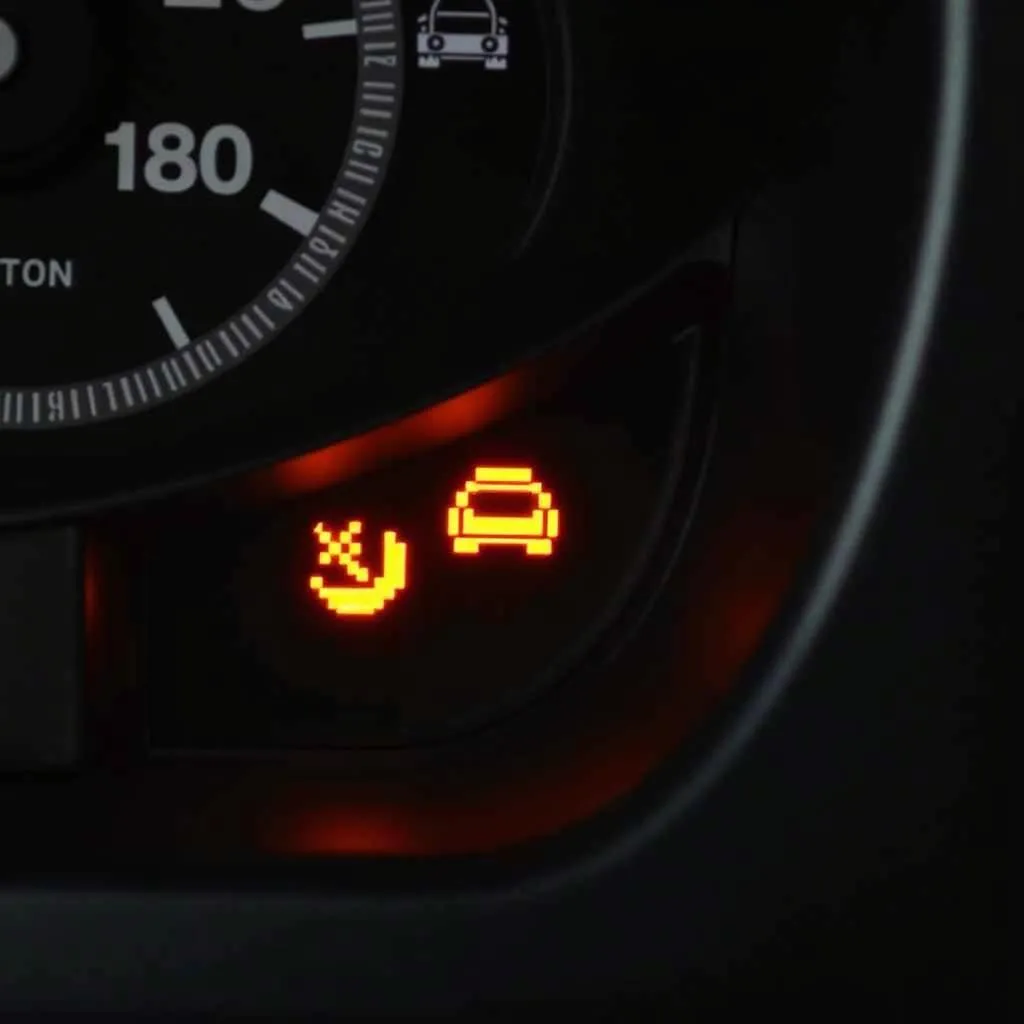Your Seat’s dashboard is equipped with various warning lights designed to alert you to potential issues. Understanding these warning lights is crucial for maintaining your car’s health and your safety. This comprehensive guide will delve into the common seat warning lights, their meanings, and what to do if one illuminates on your dashboard.
Why Understanding Your Seat Warning Lights Is Essential
Imagine driving down the road, and a cryptic symbol illuminates on your dashboard. Is it a minor glitch or a major problem? Knowing the meaning behind your Seat’s warning lights can mean the difference between a quick fix and a costly repair. Ignoring them could even lead to dangerous situations.
Types of Seat Warning Lights
Seat warning lights are color-coded to indicate the urgency of the issue:
- Red Warning Lights: These signal a serious problem requiring immediate attention. Continuing to drive might damage your car or put you at risk.
- Yellow/Orange Warning Lights: These indicate a potential issue that requires attention soon. While you might not need to pull over immediately, it’s best to have the problem diagnosed and fixed as soon as possible.
- Green/Blue Warning Lights: These are simply informational, letting you know a system, like your headlights or cruise control, is active.
Common Seat Warning Lights Explained
Let’s decipher those illuminated symbols on your dashboard.
Engine Management Light
Appearance: This light often resembles an engine block or has “EPC” written on it.
Meaning: The engine management light is your car’s “check engine” light. It indicates a problem with the engine management system, which could be anything from a faulty sensor to a more serious engine issue.
What to Do: While you might not need to pull over immediately, it’s crucial to get your car diagnosed by a mechanic, especially if the light is flashing, as this could indicate a severe issue.
Airbag Warning Light
Appearance: This light depicts a seated figure with an inflated airbag.
Meaning: This light signals a problem with the airbag system, which could range from a faulty sensor to a deployment issue.
What to Do: Because airbags are critical safety features, you should address this warning light immediately by taking your Seat to a qualified technician.
Tire Pressure Monitoring System (TPMS) Light
Appearance: This light looks like a tire cross-section with an exclamation point.
Meaning: Your TPMS light warns of underinflation in one or more tires.
What to Do: Check your tire pressure as soon as possible and inflate to the recommended PSI listed in your owner’s manual or on the driver’s side door jamb.
Brake Warning Light
Appearance: This light often looks like an exclamation mark inside a circle or parentheses.
Meaning: This warning light can indicate several things, including low brake fluid, a problem with your anti-lock braking system (ABS), or an engaged parking brake.
What to Do: If this light comes on, it’s crucial to pull over immediately and check your parking brake. If the parking brake is disengaged, it’s unsafe to continue driving, and you should contact a mechanic.
Oil Pressure Warning Light
Appearance: This light typically resembles an old-fashioned oil can.
Meaning: This light signals low oil pressure, which can cause significant engine damage if ignored.
What to Do: Pull over immediately and check your oil level. If it’s low, add more oil. If the light remains on, it’s best to have your car towed to avoid potential engine damage.
Battery Warning Light
Appearance: This light typically resembles a car battery.
Meaning: This light indicates a problem with your car’s electrical charging system. It could be due to a failing battery, a loose alternator belt, or a problem with the alternator itself.
What to Do: If this light comes on, it’s essential to address the issue quickly, as your car might not start again once you turn it off.
warning lights on a seat ibiza
Coolant Temperature Warning Light
Appearance: This light usually looks like a thermometer submerged in liquid.
Meaning: This warning light means your engine coolant is overheating.
What to Do: Pull over as soon as it’s safe and let the engine cool down completely before checking the coolant level. If the coolant is low, adding more might help, but you should still have your car inspected by a mechanic to diagnose the cause of the overheating.
seat leon diesel engine warning light
Don’t Ignore Warning Lights
“Even if your Seat seems to be running fine, a dashboard warning light suggests an underlying problem,” says master mechanic John Smith. “Addressing these issues promptly not only prevents further damage to your vehicle but also ensures your safety and that of your passengers on the road.”
dashboard warning lights seat ibiza
What to Do When a Seat Warning Light Comes On
- Consult your owner’s manual: Your Seat owner’s manual provides a comprehensive guide to all the warning lights specific to your model.
- Assess the situation: Consider the color and type of warning light. Is it safe to continue driving, or should you pull over immediately?
- Take action: Based on the urgency, either address the issue yourself (like adding air to your tires) or seek professional help.
- Don’t delay: Ignoring warning lights can lead to more serious and costly repairs down the line.
seat leon warning lights meaning
Conclusion
Staying informed about your Seat’s warning lights empowers you to act proactively and maintain your car effectively. Remember, understanding these warning signs is crucial for a safe and enjoyable driving experience. If you’re ever in doubt about a warning light, it’s always best to err on the side of caution and consult a qualified mechanic.

